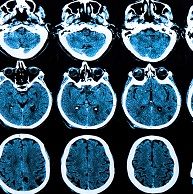Article
CTE Is Not Just for NFL Players
Author(s):
If you’re one of the millions of people who have seen the movie Concussion starring Will Smith since its release Christmas Day, you’re familiar with chronic traumatic encephalopathy (CTE). Although the film featured cases of the progressive neurodegenerative disease in deceased NFL players who were at least in their 40’s, a recent case of CTE has been identified in a late 25-year-old man with football history.

If you’re one of the millions of people who have seen the movie Concussion starring Will Smith since its release Christmas Day, you’re familiar with chronic traumatic encephalopathy (CTE). Although the film featured cases of the progressive neurodegenerative disease in deceased NFL players who were at least in their 40’s, a recent case of CTE has been identified in a late 25-year-old man with football history.
When CTE was first introduced by Bennet I. Omalu, MD, and Julian Bailes, MD, in 2002, it caused major controversy and a NFL circus, to say the least. But since then, dozens of former players have come forward with symptoms. Although the condition can only be diagnosed after death, scientists are working to detect CTE earlier in life.
In this recent case, the unnamed defensive linebacker/special teams player began playing football at the age of six, and his 16-year career included three years at a Division I college (redshirted for the first two). During that time he experienced more than 10 concussions while playing the sport, and although none of them resulted in hospitalization, the first occurred at the early age of eight.
The man suffered a concussion with momentary loss of consciousness during his freshman year of college, according to a report in JAMA Neurology. He continued to experience headaches, neck pain, blurry vision, insomnia, anxiety, tinnitus, and memory and concentration problems. A neurologist prescribed cyclobenzaprine and topiramate, which didn’t offer much help. The persisting symptoms ultimately led to the patient quitting football at the beginning of his junior season.
The former D1 football player who had graduated high school with a 3.8 GPA began failing courses; he left school with a 1.9 GPA and just 12 credits shy of graduating with a bachelor’s degree.
- The MD Magazine Neurology specialty page
His problems did not improve after leaving college. The report said that he had passive suicidal ideations, feelings of worthlessness, apathy, anhedonia, decreased appetite, and hypersomnia — which could help explain his troubles keeping a job that eventually led to no employment. He began using marijuana daily to improve sleep and reduce headaches and anxiety.
By age 23, his usual demeanor changed and he began being physically and verbally abusive to his wife. When the patient underwent neuropsychological evaluation at age 24, he displayed impaired memory scores and low average language scores.
“While proposed clinical research criteria for CTE include impairment in memory and executive function on neuropsychological testing, to our knowledge, this is the first published case of pathologically confirmed CTE to include a neuropsychological test profile,” the authors wrote.
The man passed away from a heart attack secondary to the infection Staphylococcus aureus endocarditis. When his brain was donated, postconcussive syndrome (PCS) was the primary diagnosis with possible CTE and major depression contributing to it. So although the patient did not die as a result of CTE, like the players in Concussion did, this case shows that even younger players are at risk for the condition. It also adds to the controversy surrounding head trauma and brain damage in the NFL.
What to Read Next >>> Reading Test Can Detect Sports Concussion




